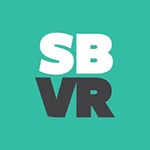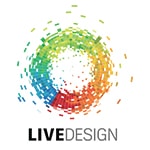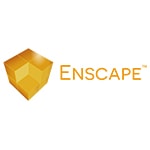CAD has come a long way since its first practical applications in the real world. We have gone from very simple designs to hyper-realistic renderings that are virtually indistinguishable from the real thing. The quality of CAD, and the possibilities, are always developing and changing, and now its time for the next major shift in design—VR. Virtual reality is an immersive experience that lets you experience a computer-generated world as if it were the real thing.
By using special goggles, you can “look around” as if you were there. Virtual reality, and augmented reality (where images are superimposed on the real world, blending the real and the computer-generated), have limitless possibilities in the world of architecture. Not only can you show a customer what their building might look like, but you can also make it so it feels like they are there. If you’re excited about the possibility of adding VR to your office, here are 9 applications to get you started.
Top VR Applications for architectural design companies
1. ARki

ARki isn’t full VR, but a mixed reality application available on Google Play. ARki allows you to take your model and superimpose it on the real world, showing how your building might look on the lot you are planning to put it on.
This app gets rave reviews by architect firms who have tried it. The favorite application for this app is to show clients what the building will look like on the site itself. Not everyone can look at a set of blueprints or sketches and imagine it as a real building. With this app, they don’t have to. It’s very helpful for bridging the gap between client and architect. ARki is only available for iOS operating systems.
2. Storyboard VR

Virtual reality is impressive in part because of its realistic feel. When you are enjoying a 360 film, you can turn your head during the movie and look at everything, not just what the camera is pointed at. Unfortunately, the realism can fall flat if it isn’t done properly, and when you’re trying to impress your clients with a VR tour of their potential building, making it shine is critically important.
That’s where Storyboard VR comes in. This program helps you “imagine and visualize” the VR experience you are trying to give the end-user. With it, you can create a prototype of the visual experience you want your client to have, and test it each step of the way. This helps you create a more refined finished product, and a VR experience that truly takes your client’s breath away.
VR is such a flexible experience, you never know what it will look like, so having an app like this to help you is a great addition to your collection. Storyboard VR requires Windows to run and is only supported by HTC Vive. You’ll need these in order to run the program.
3. SmartReality

Of course, it isn’t just clients that benefit from virtual reality. VR can be extremely useful for the actual building process as well. SmartReality is specifically geared toward architects who want to view their projects in a whole new way. Using SmartReality, you can overlay your BIM model over printed construction plans and get a 3D version.
The app allows you to interact with the model in a number of ways. You can zoom in and inspect the model closely, look at the model as a series of layers, and inspect the model from different angles.SmartReality adds a cool new aspect to inspecting your model, even allowing you to physically walk around it.It’s a great tool for forward-thinking architects; and it’s available both on Android and iOS, free.
4. Unreal Engine

Experienced architectural design services who are familiar with VR and everything it has to offer can quickly become tired of the simple features of VR apps specifically designed for architects. Although Unreal Engine was originally designed for video game designers, it has recently become popular with architects because of the detail you can add during the rendering phase.
This AR tool allows an incredible level of detail and has a wide range of tools available. Architects familiar with this product can make incredibly detailed and immersive models. As if that wasn’t exciting enough, once again this software is free to use.
5. Unity

Unity is another program designed for gaming, but with real-world applications for architects. This app got especially high reviews by architects because it allows the import of BIM and 3D models, which Unreal Engine doesn’t seem to have. This app is usually used for walkthroughs because of the quality and realism of the environments that architects create.
6. Autodesk LIVE

Let’s face it. Even if you can see the possibilities of VR in your firm, learning a whole new program just to offer it may seem like a waste of time. If you’re interested in bringing virtual reality to your clients, or using the many benefits for troubleshooting the creation process, Autodesk LIVE could be a good option.
Autodesk LIVE simplifies the process by allowing you to upload BIM files, and work from there. Autodesk LIVE is simple and easy to use, with VR available after just a few clicks. This software got rave reviews because with it you can allow your clients to look at the product even in it’s earliest stages—allowing them to catch mistakes or changes they want made before the project gets too far into the process. This program can really benefit architects and help them save time and money through clear communication, and is highly recommended.
7. Fuzor

Another app popular because of its ease of use, Fuzor helps architects learn it quickly because it integrates seamlessly with other, possibly already familiar, programs. If you’ve ever used Rhino 3d, Revit, or Google Sketchup before, you’ll already have an edge when using this program because it can integrate with all of them. It also live links with Revit, allowing changes you make in the BIM file to be seen instantly.
This makes it ideal when you need to collaborate with other team members, such as those in charge of the actual construction of the building.Fuzor doesn’t just do VR however. When linked with other programs, it can be a broad platform for 2d and 3d designs, as well as 4D construction simulation, and 5D cost tracking. You can even plan your site logistics using both vehicle and worker simulations, giving you a great deal of versatility. Fuzor is a great all-around system to use, bringing you the power of the cloud, as well as 4D.
8. Matterport

Show your clients how things are progressing with the project digitally using Matterport. This program lets you scan up to 1,000 square feet using your iPad and creates a model based on the space. Clients can use the cloud to download the models, making them readily available using either their own devices or VR. The flexibility of this program is ideal for busy architects, and the fact that it can be used in different ways makes it a simple tool to have on hand.
9. Enscape

Last but not least, if you’d rather not go out for new software, you can keep it simple and use a simple plug-in for Revit. This program handles everything for you, making it one of the easiest tools to add to your line-up. Enscape also saves you time by doing most of the hard work for you. Instead of creating your own 4D model, you can simply use your existing BIM files.
Enscape does the rest of the work for you, creating a model based off of your design. This makes it much easier to communicate with clients on the fly. Instead of struggling to describe to clients what something might look like, you can quickly put something together using the app, and let the client explore it then and there.The world of technology is constantly changing.
Architects have gone from drawing simple 2D sketches and blueprints to 3D models and photorealistic images, and now the next jump is virtual reality and augmented reality. Letting your client experience their future building in VR adds a wow factor that 3D models and simple sketches can’t do. The future of AR is immersive, and these apps can help you get ahead.
Cad Crowd’s freelance virtual reality designers can help
Cad Crowd has a wide database of skilled, experienced, and confidential freelancers. They can help with any stage of your architectural design project be it 2D drawing and drafting services or photorealistic 3D virtual reality rendering services making sure that your clients get an impression of what exactly to expect from your project. If you’re ready to get started, learn how it works. You can also receive multiple design concept ideas through a design contest. Find out how you can launch a design contest in as little as 15 minutes.

Good summary, but small mistake:
Arki is not available on google play, that information is wrong, apparently it’s only available on apple iOS store.